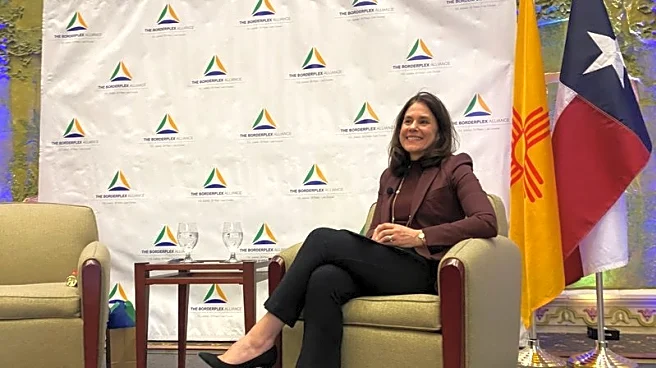What's Happening?
Federal Reserve Bank of Dallas President Lorie Logan has called for a modernization of the central bank's approach to managing money market conditions. Logan suggests shifting the focus from the federal funds lending market to the tri-party general collateral rate (TGCR), which is more active and vibrant. This proposal comes as the Federal Reserve faces challenges in maintaining its interest rate targets amid changing liquidity conditions. Logan argues that targeting the TGCR would provide more effective control over monetary conditions, as the current connections in the federal funds market are fragile and could break suddenly. The call for reform is timely, as the Federal Reserve is preparing for potential liquidity tightening at the end of the month, which could impact money market rates.
Why It's Important?
Logan's proposal to overhaul the Federal Reserve's rate control strategy is significant as it addresses the evolving dynamics of money markets and the need for more robust mechanisms to achieve monetary policy objectives. The shift to targeting the TGCR could enhance the central bank's ability to manage liquidity and stabilize interest rates, which are crucial for economic stability. This change could also mitigate risks associated with the current system, where the federal funds market has dried up due to the central bank's previous interventions during financial crises and the COVID-19 pandemic. By adopting a more flexible and responsive approach, the Federal Reserve can better navigate future economic challenges and maintain its mandates for employment and inflation.
What's Next?
The Federal Reserve may begin preparations to implement Logan's proposed changes, with potential adjustments to its rate control toolkit. This could involve consultations with market participants and stakeholders to ensure a smooth transition. The central bank will likely monitor liquidity conditions closely and provide advance notice to the markets before making any formal changes. As the Federal Reserve continues to draw down its balance sheet, it will need to remain vigilant to avoid unexpected turbulence in money markets. Logan's proposal may also prompt discussions within the Federal Open Market Committee (FOMC) about the long-term strategy for managing interest rates and achieving monetary policy goals.
Beyond the Headlines
The proposed overhaul of the Federal Reserve's rate control strategy reflects broader shifts in the financial landscape and the need for adaptive policy measures. It highlights the importance of innovation and flexibility in central banking, as traditional methods may no longer be sufficient to address contemporary challenges. The focus on the TGCR underscores the growing significance of collateralized markets in the financial system and the need for central banks to leverage these dynamics effectively. This development may also influence global monetary policy trends, as other central banks observe and potentially adopt similar strategies to enhance their rate control mechanisms.











